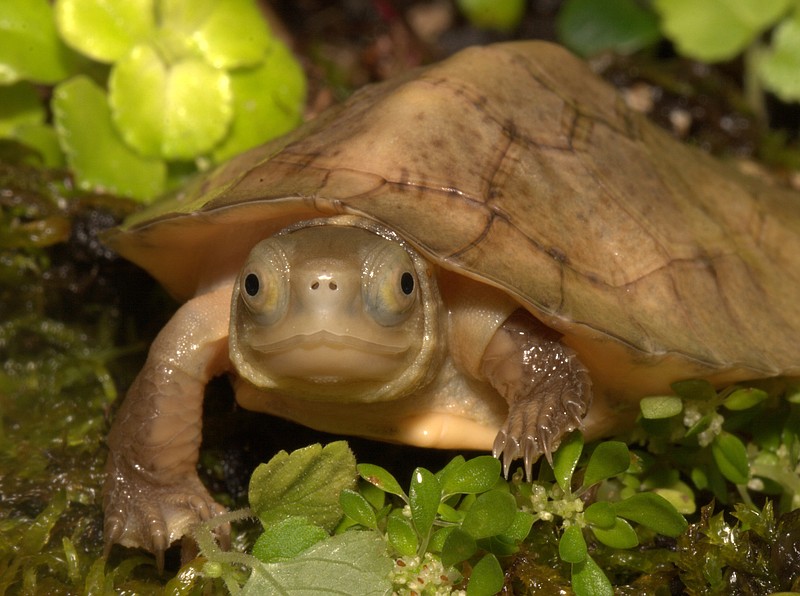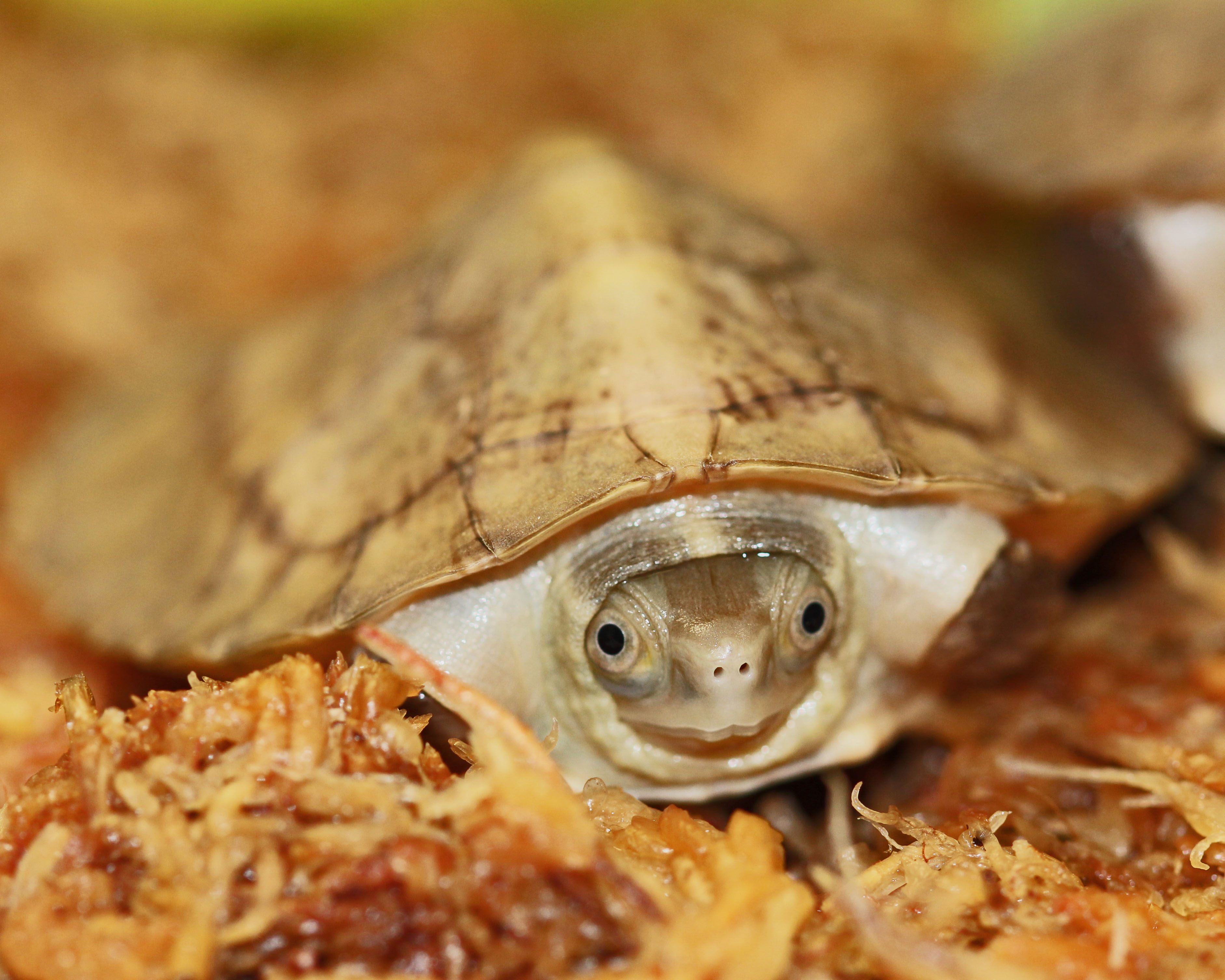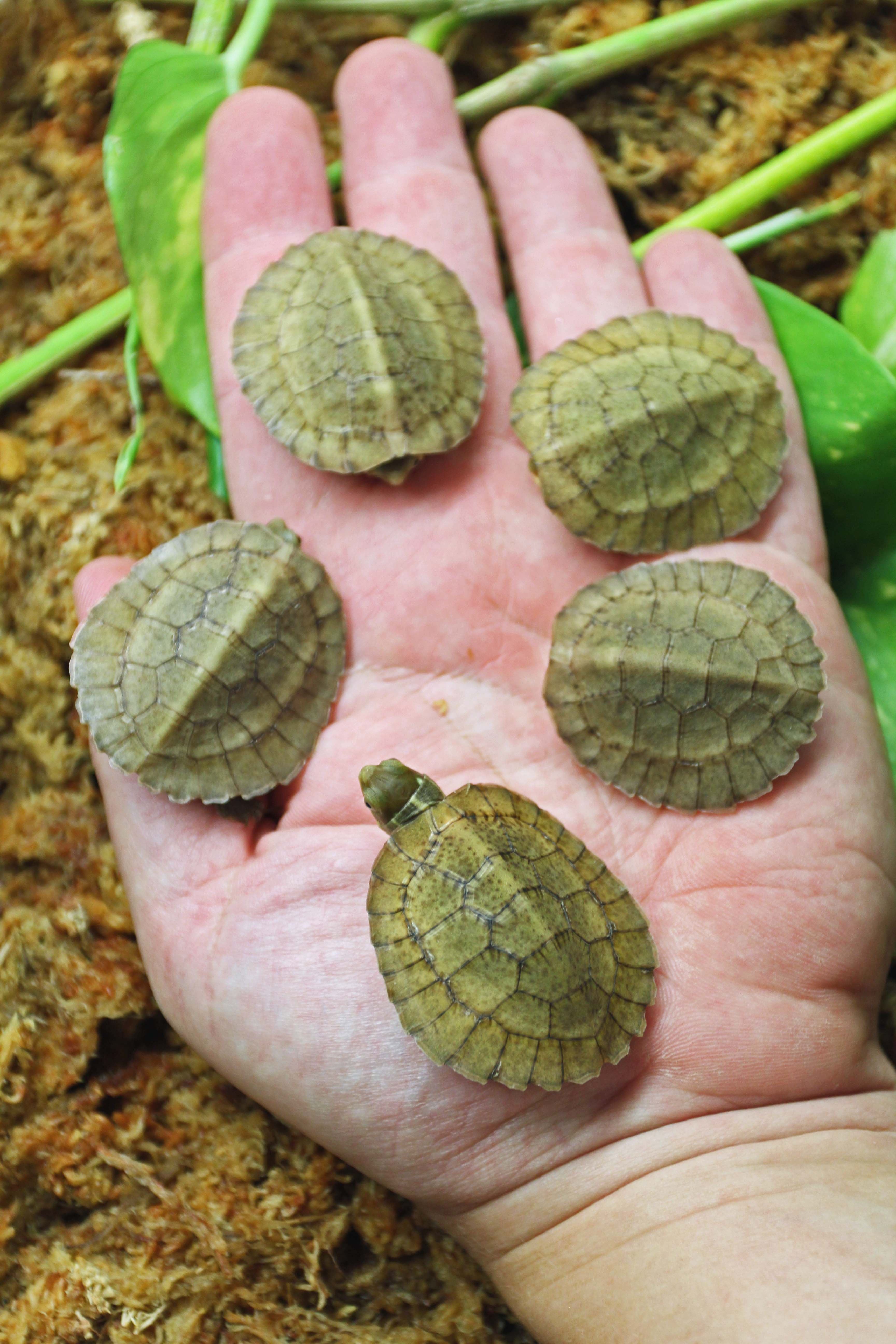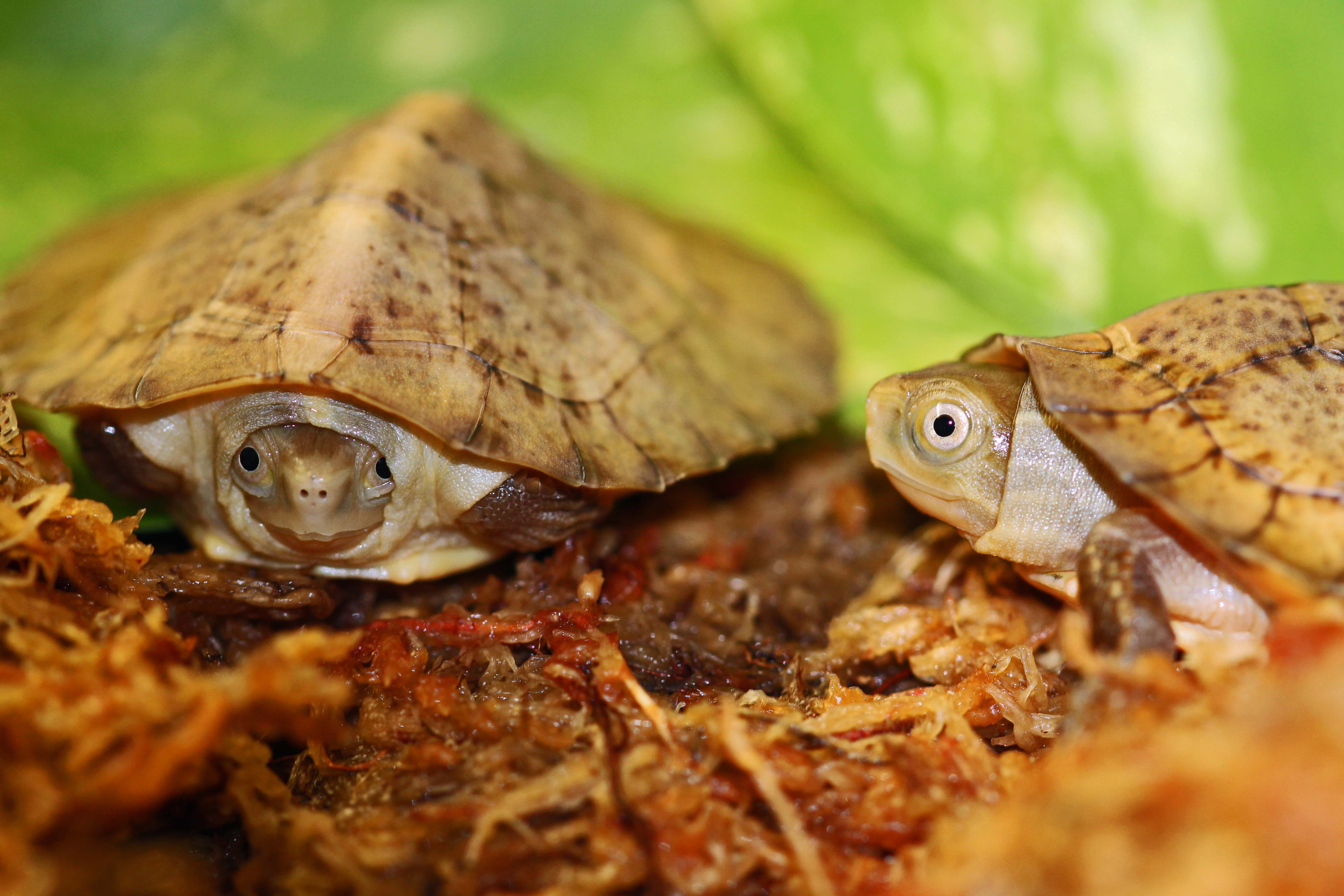Bill Hughes walked toward a room in the Tennessee Aquarium that looked like a supply closet.
"Guess you want to see the little monsters," he said, swinging open the door.
Inside is a wall of tanks containing different types of turtles. Two of the tanks contain five baby Beal's-eyed turtles that were born in mid-July, each about the size of a half dollar. In all the accredited facilities of the Association of Zoos and Aquariums in the U.S., there are only 20 Beal's-eyed turtles.
And they're all at the Tennessee Aquarium.
"This is another one that used to be really common in the pet trade, but isn't really anymore," Hughes said of the Beal's-eyed. "At some point, you just woke up and said, 'Where are they all?'"
The new turtles will be on display for the public sometime this year, but Hughes is unsure when exactly that will be.
The local aquarium is well-known for its Beal's-eyed population. In 2007, the first Beal's-eyed hatched in the aquarium. A news release said it was the first time the species was known to hatch in a North American zoo or aquarium.
The species - scientific name Sacalia bealei - is native to China and has been listed as endangered since 2000. Hughes, senior herpetologist at the aquarium, said the current recommendation is to list them as critically endangered, which would officially mean the species faces an extremely high risk of extinction in the wild.
Not a lot is known about the Beal's-eyed population, so Hughes is careful with his turtles. Some turtles' genders are determined by what temperature they're incubated at as eggs. Warmer temperatures produce females, and cooler temperatures produce males.
"But for Sacalia, I don't really know the temperatures," Hughes said.
So he incubated this latest batch between 81-83 degrees. He hopes the temperature was right in the middle of the scale and will produce a combination of males and females. But it can take years to determine the sex of turtles. With a species that has such a low population, he said he can't afford to tinker with the temperature to try to produce one sex more than the other. The motive is to get the population up. Period.
Trying to build the population is a slow process for all turtle species. Researchers estimate more than half of the 335 species of turtles in the world are facing extinction, the release said. That's because several species aren't highly productive and they're slow-maturing.
"For many species, like the Beal's-eyed turtle, AZA breeding programs are the only path to survival until we can find a way to secure their future in their native ranges," said Michael Ogle, Knoxville Zoo curator of herpetology and ornithology, in a release.
For the Beal's-eyed, Hughes won't know the sex of the turtles for six or seven years. He isn't sure what his goal for the aquarium's population is at the aquarium. But a herpetologist can always dream.
"A Beal's-eyed in every home," he joked about his goal.
Contact reporter Evan Hoopfer at ehoopfer@timesfreepress.com or @EvanHoopfer on Twitter or 423-757-6731.



